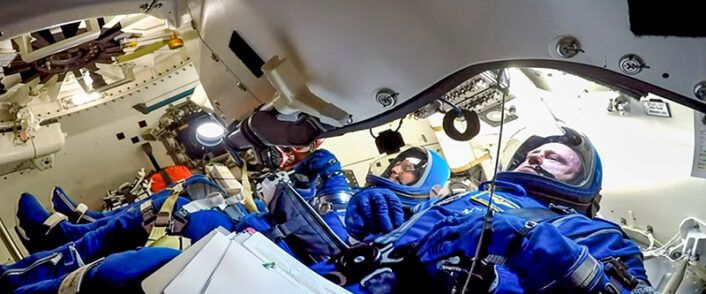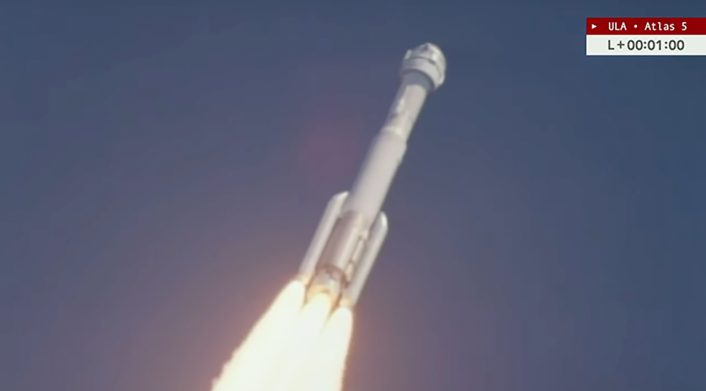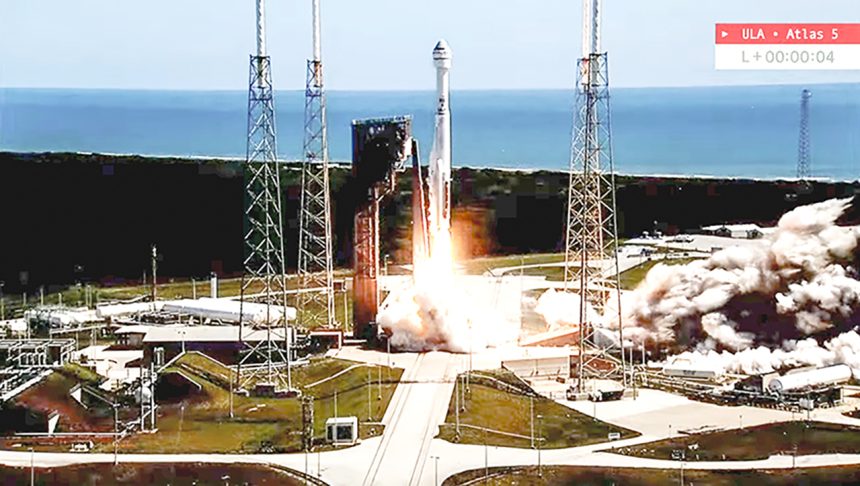Astronauts Barry Wilmore and Sunita Williams Make History on Way to Dock with ISS.
For the first time ever, a manned Boeing Starliner spacecraft has achieved operational test orbit with two astronauts on board. Retired U.S. Navy Captain, Commander Barry “Butch” Wilmore and spacecraft pilot Sunita “Sunny” Williams launched from pad 41 at Cape Canaveral Space Force Station in Florida at 1052 EDT (1452 UTC) on Wednesday, June 5, 2024.
Hate to see you go but love to see you liftoff! @NASA_Astronauts Butch Wilmore and Suni Williams are headed out from the @NASAKennedy Neil Armstrong Operations & Checkout Building. Next stop, a ride in the Astrovan to Space Launch Complex-41 where #Starliner awaits. pic.twitter.com/nXzBXaKDBg
— NASA’s Johnson Space Center (@NASA_Johnson) June 5, 2024
The launch took place in ideal weather and proceeded on schedule throughout the launch sequence.
The Boeing Starliner was boosted into sub-orbital altitude by an Atlas V rocket booster. The Atlas V rocket descends from the legacy of the original Atlas launch vehicle used in the Gemini space program of the 1960s. The Atlas family of launch vehicles were developed from the SM-65 Atlas ICBM, the first operational intercontinental ballistic missile launched by the United States in 1957.
While the service life of the SM-65 Atlas ICBM was short, the long service of the Atlas booster family as a spacecraft launcher has achieved noteworthy success.
LIFTOFF! 🚀✨ For the first time aboard @BoeingSpace’s #Starliner spacecraft atop a @ulalaunch Atlas V, @NASA_Astronauts Butch Wilmore and Suni Williams are on their way to the space station following a successful launch at 10:52am ET. Docking is set for 12:15pm Thursday, June 6. pic.twitter.com/bOcWIK6J3d
— International Space Station (@Space_Station) June 5, 2024
At two minutes prior to launch, mission commander Butch Wilmore was heard saying, “Let’s get going, let’s push it to the heavens.” The day time launch was visually spectacular as the spacecraft pierced broken cumulus on a plume of fire with the ripping sound of the Atlas RD-180 motor and two solid rocket motors echoing as Starliner rolled to a heads-up attitude for the astronauts.

The flight crew continued to throttle-up and broke the sound barrier prior to SRB burnout and Booster Engine Cut-Off or “BECO”. The spacecraft initially flew a low, sub-orbital trajectory to maximize safety and recovery capabilities in the event of a pre-orbital anomaly.

The last time an Atlas series rocket booster flew a crewed spacecraft into orbit was the Mercury Atlas-9 mission 61 years ago on May 15, 1963. During that mission, the Atlas-9 lifted the Gemini Faith 7 capsule into orbit crewed by (then) U.S. Air Force Major Gordon “Gordo” Cooper.
This was the third attempt to launch a manned Starliner mission after two prior attempts were scrubbed due to technical anomalies. The first attempt was aborted on May 6, 2024 due to irregularities with a rocket valve and a helium leak. A subsequent launch attempt was made on June 1, 2024 but was scrubbed due to a ground launch sequencer failure. Today’s successful launch is a victory for Boeing set against the backdrop of ongoing challenges in their commercial aviation sector.
Today’s Starliner test flight will culminate with a rendezvous with the International Space Station (ISS) on Thursday, June 6, 2024, when astronauts Wilmore and Williams will begin a week-long stay aboard ISS.









